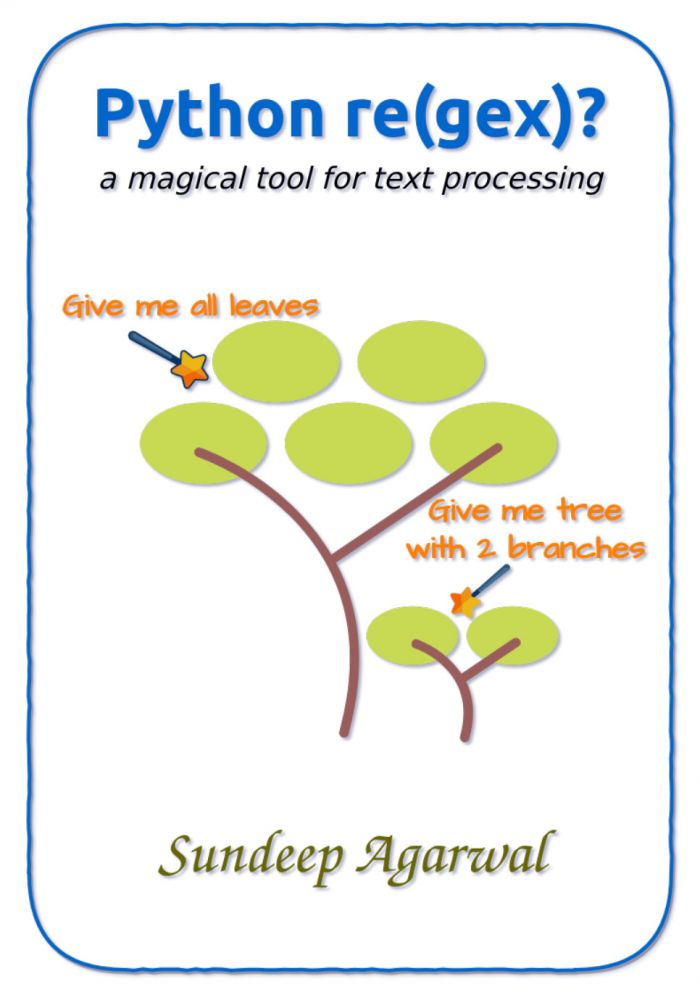
The book also includes exercises to test your understanding, which is presented together as a single file in this repo Exercises.mdRegEx in Python. Regular expressions are widely used in UNIX world.Python re(gex) Learn Python Regular Expressions step by step from beginner to advanced levels with hundreds of examples and exercises. A regular expression is a special sequence of characters that helps you match or find other strings or sets of strings, using a specialized syntax held in a pattern. X re.search ('The.Spain', txt) Try it Yourself. Search the string to see if it starts with 'The' and ends with 'Spain': import re. When you have imported the re module, you can start using regular expressions: Example.

Python Regex Tool How To Use RegEx
Now you understand the basics of RegEx, lets discuss how to use RegEx in your Python code.We would cover two important functions, which would be used to handle regular expressions. This tool not only helps you in creating regular expressions, but it also helps you learn it. It is also possible to force the regex module to release the GIL during matching by calling the matching methods with the keyword argument concurrentTrue.Tip: To build and test regular expressions, you can use RegEx tester tools such as regex101.
These are modifiers, which are listed in the table below.The re.match function returns a match object on success, None on failure. The match FunctionThis function attempts to match RE pattern to string with optional flags.Here is the description of the parameters − Sr.No.This is the regular expression to be matched.This is the string, which would be searched to match the pattern at the beginning of string.You can specify different flags using bitwise OR (|). To avoid any confusion while dealing with regular expressions, we would use Raw Strings as r'expression'.
The modifiers are specified as an optional flag. Sr.No.Phone = "2004-959-559 # This is Phone Number"When the above code is executed, it produces the following result −Regular Expression Modifiers: Option FlagsRegular expression literals may include an optional modifier to control various aspects of matching. We use group(num) or groups() function of match object to get matched expression. *', line, re.M|re.I)Print "matchObj.group() : ", matchObj.group()Print "matchObj.group(1) : ", matchObj.group(1)Print "matchObj.group(2) : ", matchObj.group(2)When the above code is executed, it produces following result −MatchObj.group() : Cats are smarter than dogsThis function searches for first occurrence of RE pattern within string with optional flags.This is the string, which would be searched to match the pattern anywhere in the string.The re.search function returns a match object on success, none on failure. Sr.No.This method returns entire match (or specific subgroup num)This method returns all matching subgroups in a tuple (empty if there weren't any)MatchObj = re.match( r'(.*) are (.*?).
Using m option allows it to match newline as well.Matches any single character in brackets.Matches any single character not in bracketsMatches 0 or more occurrences of preceding expression.Matches 1 or more occurrence of preceding expression.Matches 0 or 1 occurrence of preceding expression.Matches exactly n number of occurrences of preceding expression.Matches n or more occurrences of preceding expression.Matches at least n and at most m occurrences of preceding expression.Groups regular expressions and remembers matched text.Temporarily toggles on i, m, or x options within a regular expression. You can escape a control character by preceding it with a backslash.Following table lists the regular expression syntax that is available in Python − Sr.No.Matches any single character except newline. * ^ $ ( ) | \), all characters match themselves. It ignores whitespace (except inside a set or when escaped by a backslash) and treats unescaped # as a comment marker.Except for control characters, (+ ?. This flag affects the behavior of \w, \W, \b, \B.Permits "cuter" regular expression syntax. This interpretation affects the alphabetic group (\w and \W), as well as word boundary behavior(\b and \B).Makes $ match the end of a line (not just the end of the string) and makes ^ match the start of any line (not just the start of the string).Makes a period (dot) match any character, including a newline.Interprets letters according to the Unicode character set.
Otherwise refers to the octal representation of a character code.Regular Expression Examples Literal characters Sr.No.Match anything other than a lowercase vowelMatch a whitespace character: Match a single word character: This matches the smallest number of repetitions − Sr.No.Match "Python", "Python, python, python", etc.This matches a previously matched group again − Sr.No.Single or double-quoted string. Matches backspace (0x08) when inside brackets.Matches newlines, carriage returns, tabs, etc.Matches nth grouped subexpression if it matched already. If a newline exists, it matches just before newline.Matches word boundaries when outside brackets. Doesn't have a range.Matches independent pattern without backtracking.Matches whitespace. Doesn't have a range.Specifies position using pattern negation. If in parentheses, only that area is affected.Groups regular expressions without remembering matched text.Temporarily toggles on i, m, or x options within parentheses.Temporarily toggles off i, m, or x options within parentheses.Specifies position using a pattern.



 0 kommentar(er)
0 kommentar(er)
